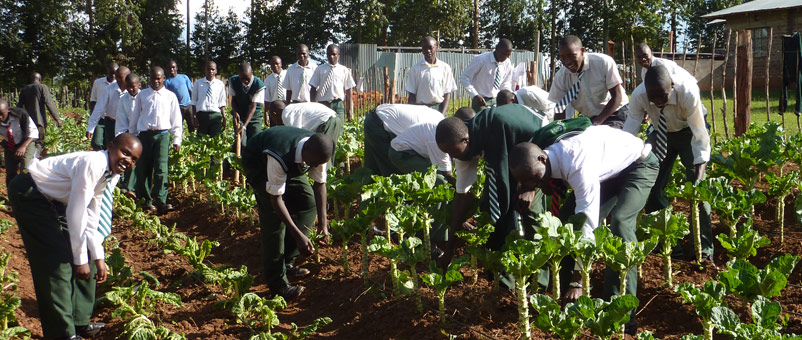Livestock is a crucial source of income for small-scale livestock producers. Globally, it is estimated that around 78 per cent of the world’s poorest communities rely on agricultural work to support their livelihoods and households. However, livestock diseases represent $358.4 billion in lost production per year.
Access to veterinary care is a critical piece of the puzzle, with higher vaccination rates associated with higher productivity. However, expensive vaccines often do not reach those who rely on healthy animals the most for their livelihoods, income and food security: small-scale livestock producers.
Small-scale livestock producers often live in remote areas and face many constraints around access to veterinary care, including the lack of financial means to pay for the necessary medicines, and sometimes even lack of knowledge on some of the diseases that their livestock may suffer from. Often, suitable vaccines are distributed in disproportionate pack sizes or are simply unavailable. However, combination vaccines, also known as multi-valent vaccines can address these access challenges and more, offering the best value for resource-poor livestock keepers.
Alternatives for smallholder farmers
The prevalence of diseases such as Contagious Bovine Pleuropneumonia (CBPP) and Peste des Petits Ruminants (PPR) in livestock is rife across the African continent, causing significant economic losses for farmers and harm to animal health and welfare. Yet, major gaps exist in the portfolio of products required by small-scale producers to effectively control pressing livestock diseases. Combination and concurrent vaccines, meaning those which target more than one disease in a single dose or administration, offer effective and affordable value to small-scale producers with an outstanding return on investment and a multitude of benefits.
For instance, combination vaccines are more cost-effective than single-use vaccinations, which tend to be more expensive. The Sheep Goat Pox/PPR combination vaccine, for example, is 40 per cent cheaper than the cost of the two vaccines delivered separately.
Multi-valent vaccines also provide maximum coverage against multiple diseases, rather than simply one livestock disease. They require just a single dose to be administered and therefore are less burdensome on the farmer, the animal, and the veterinarians. There have also been improvements around pack sizes, with 10, 50 and 100 doses available.
Developing combination vaccines
Together with partners, GALVmed is funding the development of several multi-valent vaccines against livestock diseases that are most endemic across Africa and South Asia and currently have the most negative impacts on food security for smallholder farmers. Contagious Caprine Pleuropneumonia (CCPP), for example, can result in economic losses of over $507 million per year in endemic areas, while PPR is highly contagious and affects almost 70 countries across the African continent. SGP affects goats and sheep and can lead to economic losses amounting to $48 million per year across Africa, the Middle East, and Asia. Other diseases that combination vaccines are targeting include Contagious Caprine Pleuropneumonia (CCPP), Lumpy Skin Disease (LSD), Newcastle Disease (ND), and Infectious Bursal Disease (Gumboro) (IBD).

For example, the CCPP/PPR/SGP combination vaccine for small ruminant diseases in affected regions ensures maximum disease coverage using a single vaccine and through distribution networks operating effective cold chains. This combination vaccine is significantly cheaper than monovalent vaccines. The addition of the RVF dosage to the CBPP+LSD/Rift Valley Fever vaccine – known as a concurrent vaccine – is of particular importance to smallholder farmers as it offers enhanced protection against RVF outbreaks when administered at the same time.
Other combination vaccines include the bi-valent PPR/SGP vaccine – of which GALVmed, together with a commercial partner, has sold over 27 million doses to date – as well as multi-valent vaccines against ND and Infectious bronchitis.
Looking ahead
Encouraging governments across the Global South to open up the market for private sector development could ensure small-scale farmers are able to purchase vaccines more easily and efficiently, which is particularly important in the case of a disease outbreak when a rapid response time could make or break disease control efforts.
It is estimated that 800 million people in Africa rely on healthy livestock for their livelihoods. One of the fastest-growing agricultural subsectors in developing countries, livestock accounts for around 30 per cent of agricultural GDP. However, smallholder farmers in low-income, rural areas often lack access to vaccinations and veterinary care resulting from logistical and supply chain difficulties and costs. Combination vaccines could be the answer, offering a viable and cost-effective alternative for small-scale livestock farmers all around the world.





Comments
Great Article and very informative!!! Where can one get the combination vaccines in Eastern Africa?